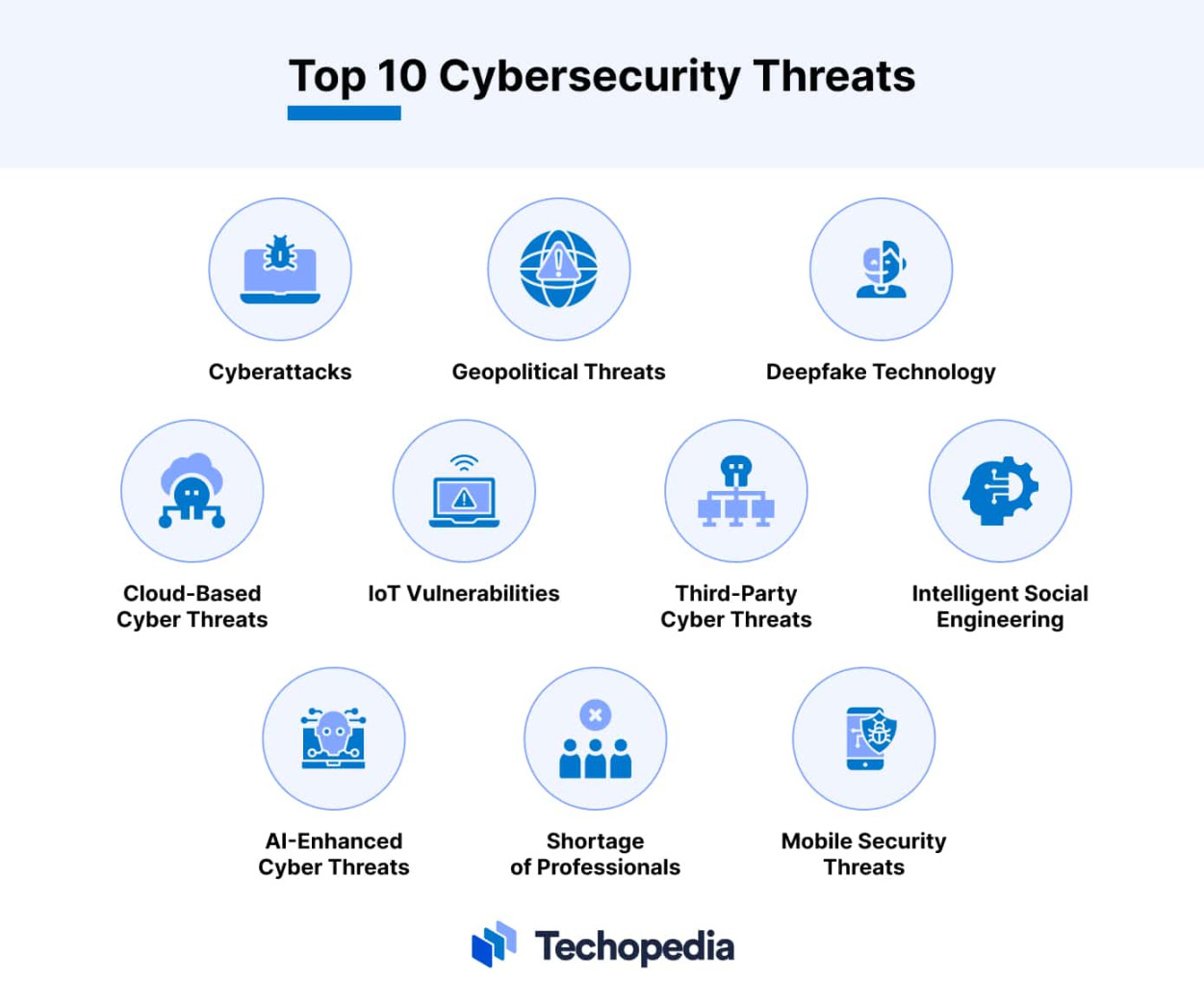Top 10 Cyber Security Threats
What does it mean?
Cyber security threats are potential dangers that can harm your computer systems, networks, and data. These threats can come from various sources, including hackers, malware, phishing attacks, and more. It is essential to be aware of these threats and take steps to protect yourself and your information.
How?

There are several ways cyber security threats can manifest themselves. Hackers can gain access to your systems through vulnerabilities in software or by using social engineering techniques to trick you into giving them sensitive information. Malware can infect your devices and steal your data, while phishing attacks can trick you into clicking on malicious links or downloading harmful attachments.
What is known
Some of the most common cyber security threats include ransomware, which encrypts your files and demands payment for their release, and DDoS attacks, which overwhelm your systems with traffic to make them unavailable. Other threats include insider threats, where employees or other trusted individuals misuse their access to your systems, and zero-day exploits, which take advantage of vulnerabilities that have not yet been patched.
Solution
There are several steps you can take to protect yourself from cyber security threats. These include keeping your software up to date, using strong and unique passwords, and being cautious about clicking on links or downloading attachments from unknown sources. You can also use antivirus software and firewalls to help protect your devices from malware and other threats.
Information
It is important to educate yourself about cyber security threats and how to protect yourself from them. By staying informed and taking proactive steps to secure your systems and data, you can reduce the risk of falling victim to a cyber attack.
Top 10 Cyber Security Threats
1. Ransomware: A type of malware that encrypts your files and demands payment for their release.
2. DDoS Attacks: Distributed Denial of Service attacks that overwhelm your systems with traffic.
3. Phishing Attacks: Attempts to trick you into revealing sensitive information through emails or messages.
4. Insider Threats: Employees or trusted individuals who misuse their access to your systems.
5. Zero-Day Exploits: Attacks that take advantage of vulnerabilities before they are patched.
6. Malware: Software designed to harm your computer systems or steal your data.
7. SQL Injection: Techniques used to attack databases through vulnerable input fields.
8. Man-in-the-Middle Attacks: Interception of communication between two parties to steal information.
9. Social Engineering: Manipulation of individuals into revealing sensitive information.
10. Cross-Site Scripting: Injection of malicious scripts into web pages to compromise users’ data.
Conclusion
In conclusion, cyber security threats are a serious concern in today’s digital world. By understanding the top 10 threats and taking steps to protect yourself, you can reduce the risk of falling victim to a cyber attack. Stay informed, stay vigilant, and stay secure.
FAQs
Q: How can I protect myself from cyber security threats?
A: You can protect yourself by keeping your software up to date, using strong passwords, and being cautious about clicking on links or downloading attachments from unknown sources.
Q: What should I do if I become a victim of a cyber attack?
A: If you become a victim of a cyber attack, report it to the proper authorities and take steps to secure your systems and data.
Q: Are there any tools or resources that can help me prevent cyber security threats?
A: Yes, there are many tools and resources available to help you prevent cyber security threats, such as antivirus software, firewalls, and security awareness training.
Q: How often should I update my software to protect against cyber security threats?
A: It is recommended to update your software as soon as updates become available to patch vulnerabilities and protect against the latest threats.
Q: What are some common signs that my computer may be infected with malware?
A: Common signs of malware infection include slow performance, unexpected pop-up windows, and changes to your browser homepage.